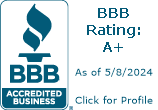Find & Buy Your Book
Find & Buy Your Book
Blog
Printing is not publishing – what to look for in a publisher relationship
Posted by on
Due to an increase in availability of print-on-demand services that provide lower-cost alternatives for converting a manuscript into a printed and bound product, there is growing confusion among new authors about what constitutes the role of a publisher. Although many publishers and printing companies have symbiotic relationships, publishing companies provide much more than simply printing and binding of a manuscript.
To better understand the role of a publisher, and what authors should look for in a publisher relationship, we reached out to two of TAA’s industry professionals and 2017 conference sponsors: William England of Sentia Publishing and Sean Wakely of FlatWorld.
The role of a publisher
Sean began by establishing the underlying purpose of a publisher, stating that “it’s important to remember why publishers exist in the first place: They offer skills and services that either authors don’t possess or would be too time consuming or expensive to develop themselves at such small scale.” Although the author does not provide these services, William states that “the publisher needs to be flexible with the author’s editorial direction, and the publisher needs to remember the author owns the vision and direction for the manuscript.” He then shared, “The publisher’s job is to make that vision a reality.”
Sean made an important distinction between a traditional publisher and a print-on-demand provider from the author’s perspective, reminding us that “In most cases, established publishers are able to offer the recognition, partnership, and distribution that most academic authors value.” A print-on-demand service does not have the recognition or distribution of a traditional publisher.
What to look for in a publisher
William offered two key elements an author should consider when evaluating publishers: availability and flexibility. He emphasized an open and readily available communication channel between the author and the editorial team to ensure corrections, changes, and status updates are provided as needed at any point in the publishing process.
Sean offered four items for consideration: reputation and track record, marketing and sales operations, publishing contract, and culture. For each, he provided additional insight into how to evaluate those elements.
Reputation and track record
- What kinds of publications does the publisher produce?
- Do they match your quality expectations?
- Does the publisher already successfully publish for the same or a closely related area? It’s usually the case that a publisher with a series or specialization in a subject is likely to do better with additional, differentiated works for the same area.
- Is this publisher known for quality work–and is it important for you personally or professionally to be published by a recognized house?
Marketing and sales operations
A key reason to work with a publisher is to take advantage of scale and expertise in marketing and sales.
- Has this publisher previously marketed to you or others you know?
- What are the quality of its campaigns?
- Does the publisher display at conferences you attend?
- Do you see this publisher’s sales representatives periodically?
Publishing contract
A publishing contract lasts as long as an author’s relationship with a publisher, so it’s important to prepare in advance for contract negotiations.
- Ask to see a blank contract as soon as a publisher shows interest in order to become familiar with the terms before a negotiation starts.
- Consult a legal representative familiar with publishing contracts to be sure you understand the terms.
Culture
Use your professional network to see if you know anyone who works with this publisher.
- What has been his/her experience with this publisher?
- Does the publisher get deeply involved in developing and editing a manuscript? Or does it take more of a hands-off approach? Which approach to you prefer?
- Editors come and go–see what you can find out about the company’s overall culture, which is likely to persist long after the editor with whom you’ve signed is gone.
- Do you feel compatible with what you’ve learned about this company’s priorities, its stated mission, and how it treats authors and customers?
In considering a publication route for your next manuscript, determine whether the company you are considering is a printer or a publisher. If they are a publisher, consider the elements of availability, flexibility, reputation and track record, marketing and sales operations, publishing contract, and culture as suggested by William and Sean.

Don't have time to write your own text or ebook? Customize our materials!
With the stress of moving courses online and going fully virtual due to Covid, professors and instructors are stressed about finding the best materials to use in their course. The good news is you do not have to write your own materials! Sentia has content covering all major disciplines - from English, to Business, to [...]
 Loading... Please wait...
Loading... Please wait... 
